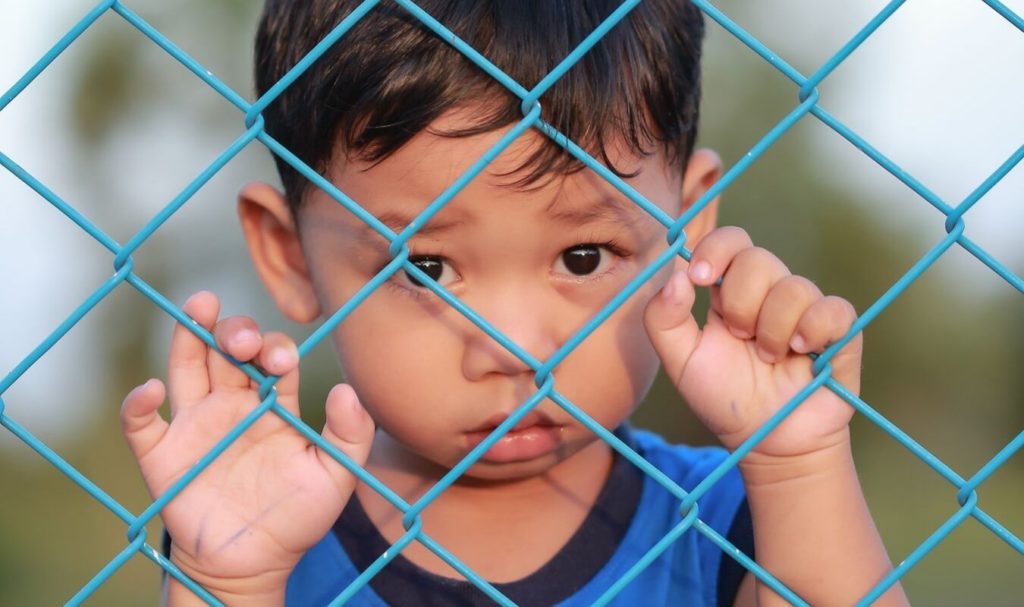
Recently, an immigrant asylum smuggler went public with inside secrets about his “profession”.
How much of this news story is true? That’s a million dollar question.
Whenever someone being interviewed is sheltered from public questioning, many suspicions are bound to arise.
And the interviewee in this story is an alleged Honduran coyote who agreed to speak on the condition of anonymity.
A Coyote Speaks
Central American children arriving at the U.S. border-60,000 unaccompanied minors have been caught by U.S. border agents since October-are not making the trek alone.
Many kids are guided north by coyotes, human traffickers hired to help migrants navigate the dangerous journey thousands of miles away, passing through several countries.
What Is A Coyote?
The term coyote is a Spanish word which refers to the practice of guiding immigrants for a fee across the Mexico-United States border.
False Smuggler Promises Or Misguided Immigrant Expectations?
Coyotes are not the most trust-worthy or honest individuals in the world, a fact even the Fusion reporters openly acknowledge.
Hence, this story could very well be contrived.
Nonetheless, for two reasons, I am inclined to think the asylum smuggler interview is authentic.
First, I respect the quality and integrity of the work performed by news reporter Jorge Ramos.
Second, in my practice as a Riverside immigration attorney, I’ve gained some secondhand and thirdhand knowledge about how smugglers work.
Lorena, an asylum seeker from Central America, recently visited my office with her older sister.
Lorena had just arrived in town after being released from immigration custody in Texas.
They wanted to assess Lorena’s chances to win her asylum claim.
I asked her to explain her reasons for leaving her home country. She described a situation similar to those mentioned by other asylum seekers I had interviewed over the past few months. The details varied, but only slightly.
I probed for more concrete information, aware that an immigration judge would demand to know such information.
On the whole, Lorena seemed convincing. Yet, her explanations were shaky in certain respects. As I dug deeper for information on these topics, she began to subtly contradict herself.
At the end of our 45-minute discussion, I asked if this was what she had told the border officers who had apprehended her. She nodded in the affirmative.
I asked if she was ready to tell an immigration judge her story. Again, he nodded yes.
I informed her that a judge would be tougher than the immigration officers, and having heard far more stories than even me, he would likely be more skeptical.
I than asked how much she had paid the coyote who guided her. She and her sister looked at each other, as if the payment was an undisclosable secret. Once she gave me the figure, I asked who paid. She confided the money had come from her sister.
I asked, “What did the smuggler promise you in return?”
“That I would make it into the United States.”
“Did he say that you would likely be placed in a detention center?”
“Not at all.”
The coyote fulfilled his promise.
It wasn’t what Lorena and her sister were expecting.
Based on such insights, it seems there is a good deal of correlation in the coyote’s televised commentary.
On the other hand, I do not accept his statements hook, line, and sinker.
The coyote interviewed by Fusion, however, does not pretend to speak for all smugglers. He is presumably a coyote from Honduras and his comments are made in the context of the current Central American youth refugee crisis.
Central American Asylum Seekers: Better Than Smuggling Drugs
The asylum smuggler says he brings six people to the United States every month, earning a total of $6,000, which he calls a good living for Honduras.
Minors are charged $5,000 each. All the coyote has to do is get them to the border — a four-day trek.
It’s “the biggest and best business that could have been created,” the coyote says.
“It’s a better business than drugs,” he added. But the drug cartels are involved, taking a bite along the way – on parts of the route they control in Mexico, he says.
The coyote’s rates might seem high for impoverished Central Americans, but he says it’s the cost of business in an industry where most of the money goes to paying bribes along the way. Visas, passports, checkpoints all come with a price, he says.
Although I have assisted many immigrants from Honduras, Guatemala, and El Salvador with their asylum cases throughout my deportation defense career, the current Central American exodus has raised a few novel issues.
From the outset of the huge influx at U.S. borders, I assumed there were immigration fraud and smuggling rings already playing an active role in the journeys of some children.
Unfortunately, many of my colleagues dismissed my concerns.
Several wanted to turn a deaf ear because they feared a political backlash.
Bad strategy.
On the contrary, that’s why pro-immigration lawyers need to take a stance against smuggling rings.
We cannot expect to win the public’s sympathy on issues of reform unless we’re willing to stamp out the bad actors.
To the extent immigration war is a propanda battle, by not confronting immigrant smugglers, we invite criticism from many who would otherwise be our political allies.
Over the past few weeks, it has become clear that my fears were on point. The Fusion interview lends further credence.




